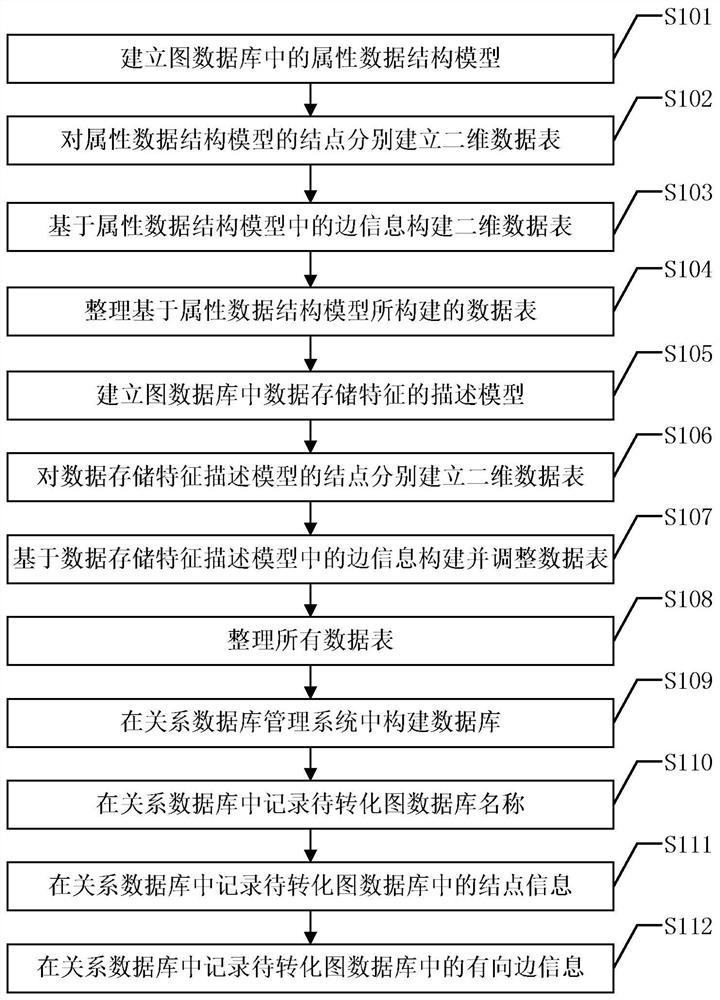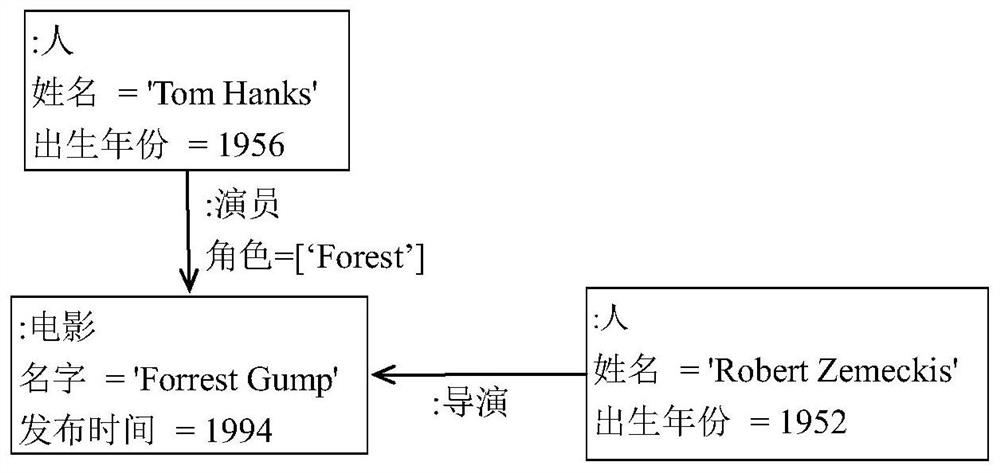A method to transform graph database into relational database
A data relationship and database technology, applied in the database field, can solve the problems of data omission, redundancy, affecting data access and operation, etc.
- Summary
- Abstract
- Description
- Claims
- Application Information
AI Technical Summary
Problems solved by technology
Method used
Image
Examples
Embodiment
[0056] figure 1 It is a flowchart of a specific embodiment of the method for converting a graph database into a relational database in the present invention. Such as figure 1 As shown, the specific steps of the method for converting a graph database into a relational database in the present invention include:
[0057] S101: Establish an attribute data structure model in the graph database:
[0058] A generalized directed hypergraph is used to represent data and the relationship between data, and contains three graphic elements: nodes, directed edges, and additional directed edges. figure 2 is a schematic diagram of the appearance of the elements of the generalized directed hypergraph in this embodiment. Such as figure 2 As shown, "node" is represented by hollow dot; "directed edge" is represented by arrow, and the head and tail of the arrow must be "node"; "additional directed edge" is represented by arrow, and additional The tail of a directed edge is a "directed edge"...
PUM
 Login to View More
Login to View More Abstract
Description
Claims
Application Information
 Login to View More
Login to View More - R&D
- Intellectual Property
- Life Sciences
- Materials
- Tech Scout
- Unparalleled Data Quality
- Higher Quality Content
- 60% Fewer Hallucinations
Browse by: Latest US Patents, China's latest patents, Technical Efficacy Thesaurus, Application Domain, Technology Topic, Popular Technical Reports.
© 2025 PatSnap. All rights reserved.Legal|Privacy policy|Modern Slavery Act Transparency Statement|Sitemap|About US| Contact US: help@patsnap.com



